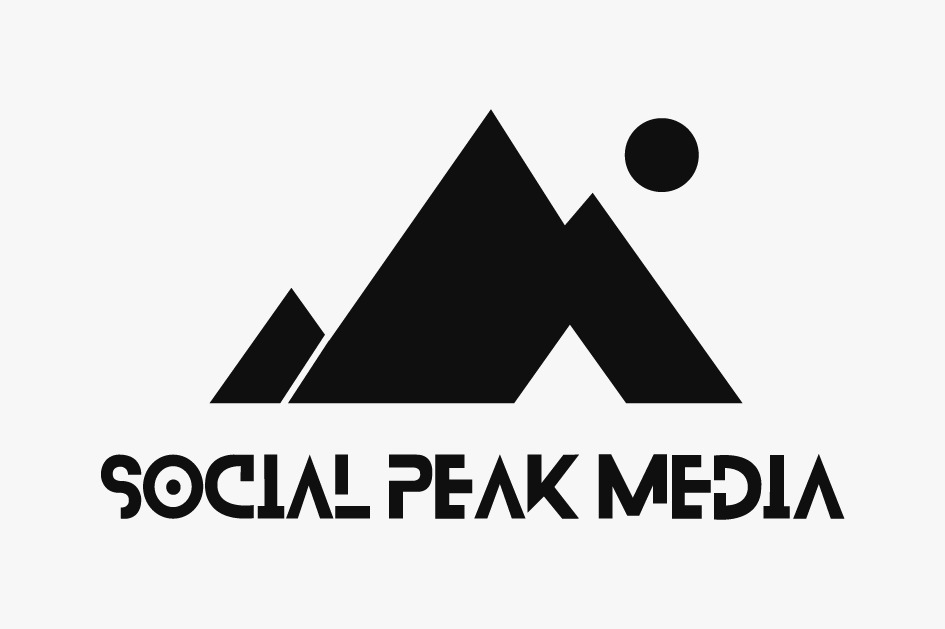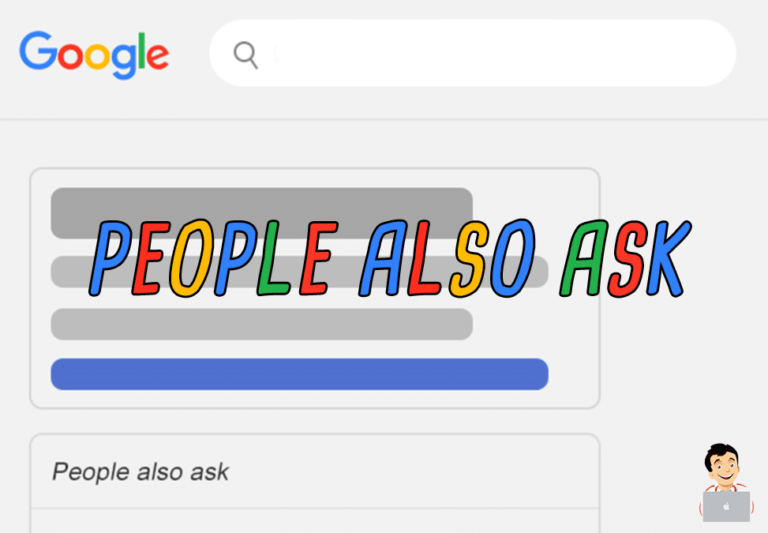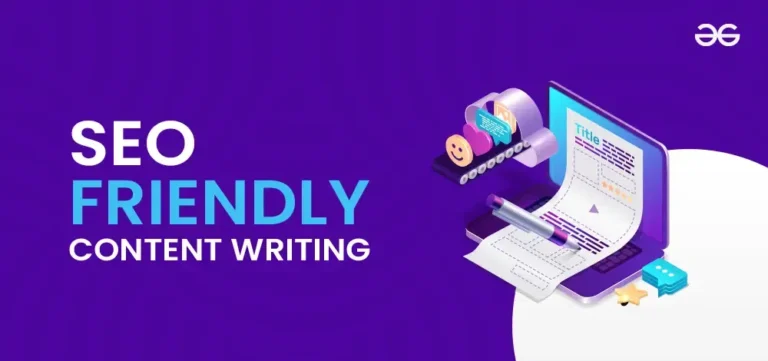The Ultimate Guide to Website Development for Modern Brands (2025 Edition)
Website development has never been more important than it is in 2025. In a digital-first marketplace, your website isn’t just a business card—it’s your store, your customer service desk, and your first impression all rolled into one.
A recent report suggests that nearly 95% of a visitor’s first impression of your business is tied directly to your web design. That means the way your site looks, feels, and performs can make or break a potential sale long before a customer picks up the phone or fills out a contact form.
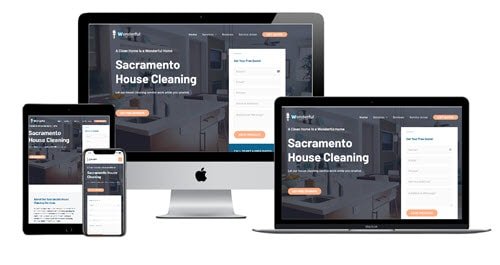
This comprehensive guide will show you how to build a website that not only looks great but also strengthens your brand, delights your users, and ranks highly in search results. We’ll weave insights from web design trend reports, digital marketing experts, and emerging AI developments to help you build a modern website that supports your business goals.
Setting the Foundation – Planning & Strategy
Define Your Purpose and Audience
Every successful website begins with a clear understanding of why it exists and who it serves. Before you dive into pixels and code, outline the primary goals of your site. Are you looking to attract new leads, sell products, build community, or position yourself as an industry authority? Identifying your website’s core purpose guides every subsequent decision about design, structure, and content.
Once you’ve defined your purpose, research your target audience. Build detailed user personas that include demographic information, motivations, challenges, and preferred devices. Understanding your users’ needs will shape everything from your navigation to your choice of images.
Competitive Analysis and Market Research
A sophisticated website strategy also involves studying competitors and industry benchmarks. Look at how top brands in your space structure their navigation, present their value propositions, and guide users through the sales funnel. Analyze their strengths and weaknesses, then identify opportunities for differentiation. Consider the keywords they’re targeting, the types of content that perform well for them, and how they nurture prospects over time. A thorough competitive analysis not only informs your design decisions but also ensures your site is poised to outrank competitors in search results.
Information Architecture and Content Planning
Information architecture (IA) refers to how content is organized and labeled across your site. A well-structured IA ensures users can find information quickly and intuitively. Start with a sitemap that outlines your main pages and their relationships. Then define content categories, such as products, services, case studies, FAQs, blogs, and contact pages.
When planning content, think beyond words. Include images, videos, infographics, and interactive elements that help convey your message. Content planning is also an opportunity to identify which pages will form your “pillar” content—substantial resources that can serve as cornerstone content, linking to related subtopics across your site. This pillar-and-cluster approach is central to the Koray Tugberk GUBUR framework because it boosts topical authority and search visibility.
Core Development Principles – Modern, Responsive, and User-Centric

Responsive Design Is Non-Negotiable
Responsive web design ensures your site looks and functions well on desktops, tablets, and smartphones. In 2025, responsive design is not just a trend—it’s mandatory. Websites that don’t adapt seamlessly to different screen sizes frustrate users and may suffer lower search rankings.
The Fullestop article on custom web development underscores that responsive design is essential for creating a consistent user experience across devices and improving SEO. To implement responsive design, use flexible grid layouts, fluid images, and CSS media queries. Test your design extensively on multiple devices and screen orientations.
Fast Loading Speeds and Performance Optimization
Speed is a key ranking factor and user experience metric. Research shows that mobile websites should load within three seconds; otherwise, 53 % of users abandon the site. Google’s Core Web Vitals, which measure load speed, interactivity, and visual stability, are now part of the search algorithm.
To meet these standards, compress images, minify CSS and JavaScript, leverage browser caching, and use a content delivery network (CDN). Aim for a page weight under 2 MB and monitor performance using tools like PageSpeed Insights or Lighthouse.
Embrace User-Centric Design and Accessibility
User-centric design is about simplifying experiences so visitors can achieve their goals efficiently. In 2025, websites must be accessible to all users, including those with disabilities. The Fullestop article notes that user-centric design involves optimizing for readability and navigation while incorporating features like keyboard shortcuts, high contrast ratios, and descriptive alt text for images.
Accessibility is not only ethical and inclusive—it’s increasingly regulated. Follow WCAG guidelines to meet standards such as providing captions for videos, ensuring form fields have labels, and enabling keyboard navigation. Don’t forget to include an accessibility statement on your site.
Personalization and AI-Powered Experiences
Personalized experiences are key to modern web development. The Fullestop article highlights personalization features that tailor content based on a visitor’s location, behavior, and preferences. For example, eCommerce sites can recommend products based on past purchases or show region-specific promotions.
AI-based engines process user data in real time to deliver highly personalized experiences. Hostinger’s 2025 web design trends report notes that AI algorithms enable personalized content recommendations, tailored layouts, and product suggestions. In practice, personalization involves capturing user data (with consent), segmenting users, and serving dynamic content variations that increase engagement.
AI-Assisted Development – Automated Layouts and Chatbots
AI tools are not only for content but also for design. According to Hostinger’s guide, advanced machine learning models can help generate functional, visually appealing layouts that are optimized for search engines. AI-driven design assistants analyze user preferences and automatically select templates, color schemes, and typography combinations.
Another AI-driven trend is the integration of chatbots, which have become more sophisticated in natural language processing and context awareness. These bots can handle common queries, guide users through purchases, and provide 24/7 support. This not only enhances user experience but also reduces the burden on human support teams.
Security and Privacy Safeguards
Trust is critical online. Security features protect user data and reinforce credibility. Fullestop emphasizes that modern websites must implement SSL certificates, two-factor authentication, and compliance with privacy laws such as GDPR and CCPA.
Ensure all forms and checkout pages are encrypted. Conduct regular vulnerability assessments and maintain secure coding practices. Privacy policies must be transparent, detailing what data you collect and how it’s used. In 2025, ethical considerations also require that you allow users to opt out of tracking and ensure cookies are properly managed.
SEO Foundations and Technical Optimization
Even the most beautiful website must be discoverable. Search engine optimization (SEO) is the key to visibility. The Fullestop article underscores the importance of SEO optimization through friendly URLs, fast load speeds, well-crafted meta tags, descriptive headings, strategic keyword usage, and mobile performance.
Beyond these basics, optimize images with descriptive file names and alt text, use structured data for rich snippets, and implement internal linking to signal relationships between pages. Hostinger notes that AI tools can help generate SEO-friendly content and highlight SEO improvements . Don’t neglect off-page SEO—backlink building and social signals still matter.
Interactive and Engaging Elements
Static websites are a thing of the past. Fullestop suggests adding slides, animations, videos, quizzes, and infographics to engage users. Interactivity keeps visitors on the site longer and encourages them to explore. TheeDigital’s web design trends highlight micro-interactions—small animations that offer subtle feedback.
For example, links can change colors on hover, or a burst of color can follow your cursor after a click. Micro animations, which guide users through interactions, add playfulness and can highlight key actions. Gamification, such as quizzes and calculators, encourages users to spend more time on your site and share data voluntarily.
Modern Design Trends Shaping 2025 Websites
Bold Typography and Expressive Fonts
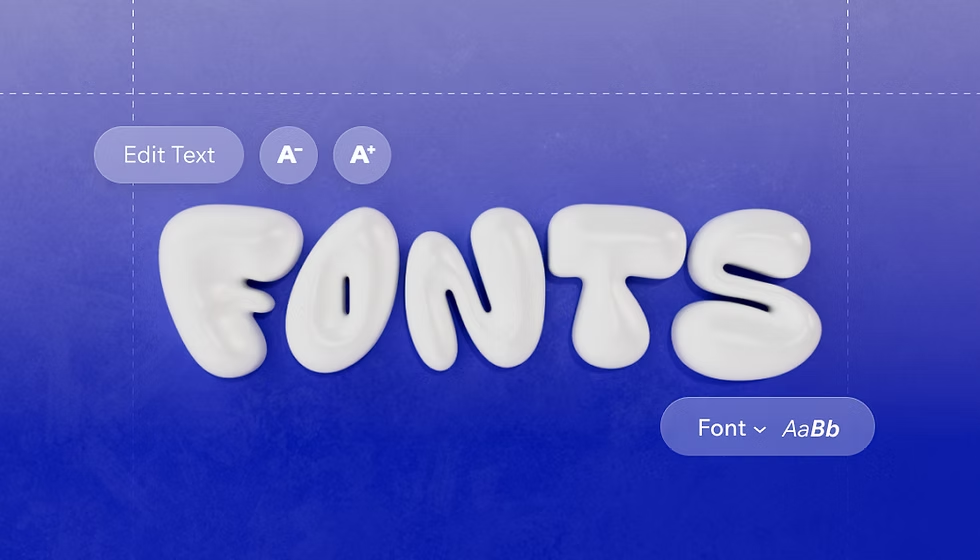
Typography is more than just picking a font—it conveys personality. Hostinger reports that 2025 is the year of bold, experimental typography. Oversized fonts and retro typefaces create a strong first impression while enhancing readability. Consider variable fonts, which allow multiple weights and styles within a single file. They improve load times and create a dynamic typographic hierarchy. When using bold fonts, pair them with generous line spacing and white space to avoid overwhelming the reader.
Embracing Dark Mode
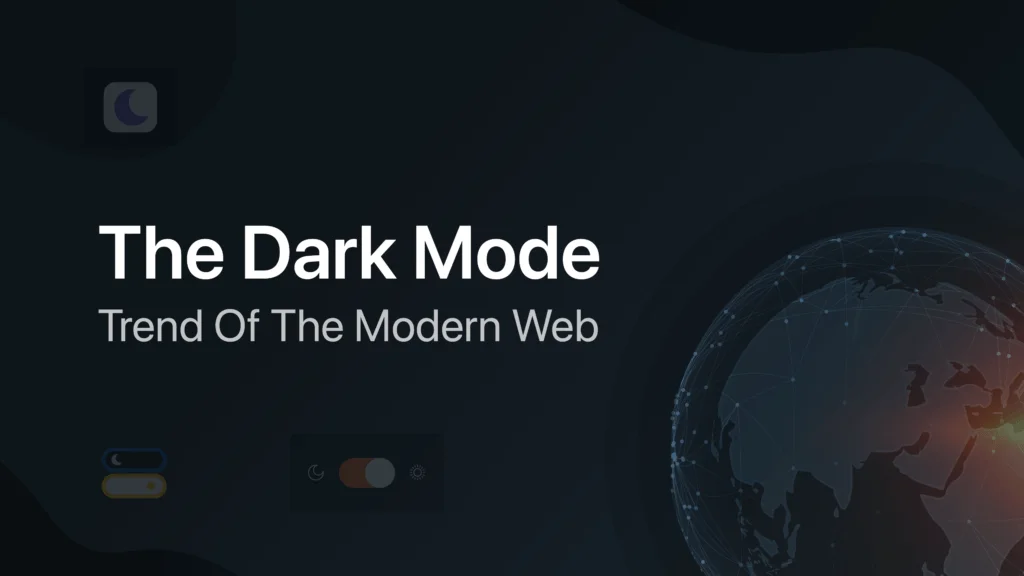
Dark mode isn’t just an aesthetic fad; it reduces eye strain and can prolong battery life on OLED screens. Offering users a choice between light and dark modes shows attention to their comfort and accessibility needs. Many brands implement automatic dark mode that follows a user’s system preferences. When designing for dark mode, ensure adequate contrast between text and background, and adjust image assets (such as logos) so they remain visible. Dark backgrounds also make vibrant colors and photographs pop, giving your website an ultra-modern look.
3D and Immersive Experiences

Immersive 3D elements are no longer reserved for gaming websites. Hostinger notes that interactive 3D elements and animations add depth and engagement. Examples include rotating product models, interactive maps, and dynamic backgrounds that respond to scroll.
TheeDigital article notes that interactive 3D models allow customers to view products from every angle, improving confidence in online purchases. As web browsers continue to support WebGL and 3D libraries, expect more websites to incorporate subtle yet captivating 3D effects.
Sustainability and Eco-Friendly Design
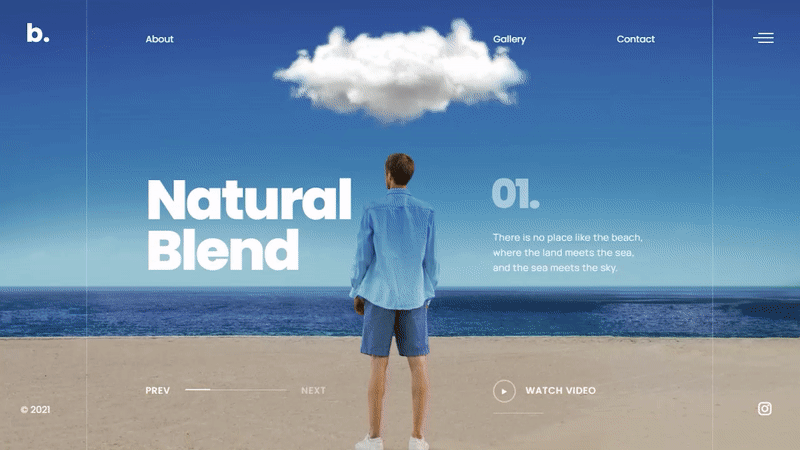
Modern brands are adopting eco-friendly design in both their aesthetics and practices. Hostinger’s article points out that sustainability trends include natural color schemes and minimalist design that reflect modern values. Eco-friendly websites are optimized for energy efficiency (reducing unnecessary scripts and images) and use carbon-aware hosting providers. Designs that evoke nature—through earth tones, organic shapes, and eco-friendly imagery—build trust with audiences who care about the environment.
Organic Shapes and Soft UI (Neumorphism)
2025 design is breaking away from rigid grids. Abstract and organic shapes create fluid, dynamic layouts. Neumorphism, or Soft UI, blends skeuomorphism and flat design to create tactile interfaces with gentle shadows and raised elements. Soft UI can make buttons and cards feel touchable, enhancing user interaction. Use this style sparingly for primary controls or important containers—excessive softness can reduce contrast and clarity.
Micro-Interactions and Emotional Design
Tiny interactive elements make a big impact. Hostinger highlights the importance of micro interactions like hover effects and button animations in improving user engagement. These interactions provide instant feedback, guiding users through forms or navigation. Emotional design takes this further by using colors, imagery, and typography to evoke feelings. By aligning design elements with your brand story, you can create a more memorable experience that fosters connection and loyalty.
Gradients, Color Transitions, and Vibrant Palettes
Gradients add depth and visual interest to backgrounds, buttons, and headings. Hostinger notes that gradients help direct attention to key information. Modern gradients involve multiple color stops, subtle transitions, and pastel tones that evoke warmth and sophistication. Pair gradients with clean typography and plenty of white space for maximum impact. Bold color palettes, combined with gradients, create dynamic visual hierarchies and highlight important content.
Microcopy and Conversational UI

Beyond visuals, copywriting is evolving. Concise, friendly microcopy helps guide users through loading screens, checkout processes, and onboarding flows. Conversational UI—chatbots that mimic human conversation—makes interactions smoother and reduces friction. Good microcopy anticipates user questions, clarifies expectations, and injects personality into your brand voice. Use it in forms, button labels, notifications, and error messages to reassure users and build trust.
Combining Images With Graphic Elements
Layering images with text, icons, and graphic shapes adds depth and meaning. This technique merges photography with illustration to create visually compelling compositions that tell a story. For example, overlay descriptive text on a product image with a semi-transparent box or add icons to illustrate features. When layering, ensure contrast remains high for readability.
White Space and Minimalism
Minimalism is returning with a focus on intentional white space. WebFX notes that purposeful white space guides users through content, defines relationships between elements, and allows visitors’ eyes to rest. Minimalist designs minimize distractions and highlight essential information. Use generous margins, consistent line spacing, and simple color schemes to create a calm, organized environment. White space also improves comprehension by grouping related content and establishing a visual hierarchy.
Playful Cursors and Interactive Navigation
Adding subtle playfulness to your cursor can delight users. Custom cursors change shape or trigger animations when hovering over interactive elements. For instance, the cursor might transform into a plus sign over an expandable section or show a ripple effect when clicking. These small details enhance engagement and differentiate your site from competitors. Make sure the cursor remains functional and doesn’t confuse users.
Full-Page Headers and Parallax Scrolling
Full-page headers pair compelling headlines with eye-catching images or videos. They capture attention immediately and present your value proposition. Pairing the header with clear calls-to-action ensures users know the next step. Parallax scrolling adds depth by moving background elements at different speeds while the user scrolls. Used thoughtfully, parallax can enhance storytelling and encourage exploration. Avoid overusing these effects as they can impact performance.
Custom Illustrations and 3D Cursors
Custom illustrations distinguish your brand and tell a story that stock photos cannot. Illustrations can be static or animated; they might incorporate 3D elements, gradient shading, and interactive features that move with the cursor. WebFX notes that modern websites incorporate 3D cursor interactions and digital cut-out styles that mimic layered paper. These design choices create depth and encourage user exploration.
Building With Technology – Front-End, Back-End, and Beyond
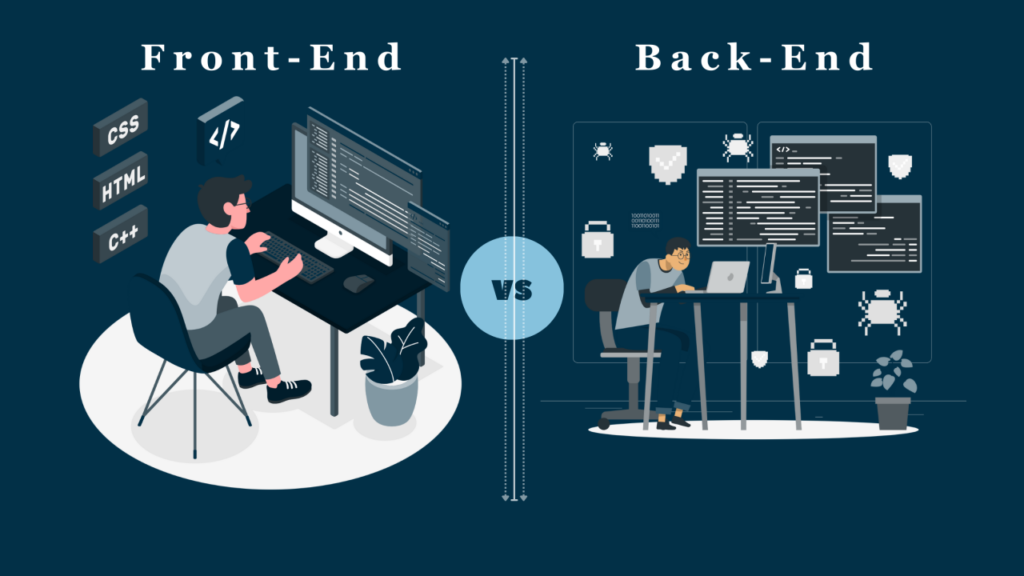
Selecting the Right Technology Stack
Choose your tools based on your project’s needs, your team’s expertise, and future scalability. Front-end frameworks like React, Vue, and Angular power dynamic, component-driven interfaces. React is particularly popular for its vast ecosystem and the ability to build reusable components. Vue offers a gentle learning curve and versatility. Angular provides a robust framework with built-in tooling. If performance and static site generation are priorities, consider Next.js or Nuxt.js, which handle server-side rendering and static exports.
On the back end, Node.js allows you to use JavaScript across the entire stack, while frameworks like Express.js, NestJS, and Fastify help organize and scale server code. For more traditional server-side rendering, consider Python’s Django, Ruby on Rails, or PHP’s Laravel. When choosing a language, factor in speed, security, community support, and your team’s familiarity.
Headless CMS and the JAMstack
A headless content management system (CMS) decouples the content layer from the presentation layer. This separation allows content to be delivered via API to any front-end—web, mobile, or IoT devices. Popular headless CMSs include Contentful, Strapi, Sanity, and WordPress with the REST API. Pairing a headless CMS with the JAMstack (JavaScript, APIs, and Markup) yields fast, secure, and scalable sites.
Static site generators like Gatsby and Next.js pre-build pages at compile time, reducing server load and improving performance. For brands that require omnichannel consistency, headless architectures enable content reuse across websites, apps, and social platforms.
Progressive Web Apps and Offline Functionality
Progressive Web Apps (PWAs) bridge the gap between websites and native mobile apps. They offer offline access, push notifications, and installable home-screen icons. For modern brands with audiences on mobile devices, PWAs provide a cost-effective way to deliver app-like experiences without the overhead of native development.
Technologies like Service Workers and Web App Manifests are essential for caching assets and enabling offline functionality. As mobile network speeds vary globally, PWAs ensure that your site remains usable even on slow or intermittent connections.
API Integrations and Microservices
Modern websites often rely on multiple APIs—from payment gateways and CRMs to marketing automation and analytics platforms. Carefully plan your integrations to maintain data integrity and security. Microservices architecture divides your site into small, independent services that communicate via API.
This design improves scalability, reliability, and ease of deployment. For example, your eCommerce site might have separate services for product catalog, user accounts, and inventory management, all interacting through API endpoints.
Database Design and Scalability
Selecting the right database is crucial. Relational databases like PostgreSQL and MySQL provide robust transactional integrity, while NoSQL databases like MongoDB and Firebase Firestore offer flexibility for document-based or hierarchical data. Consider using a multi-model database if your website must handle diverse data types.
Database scaling can be vertical (increasing resources) or horizontal (sharding or replicating data). Cloud providers like AWS, Google Cloud, and Azure offer managed database services with automated backups, scaling, and security.
Content Management and Brand Storytelling
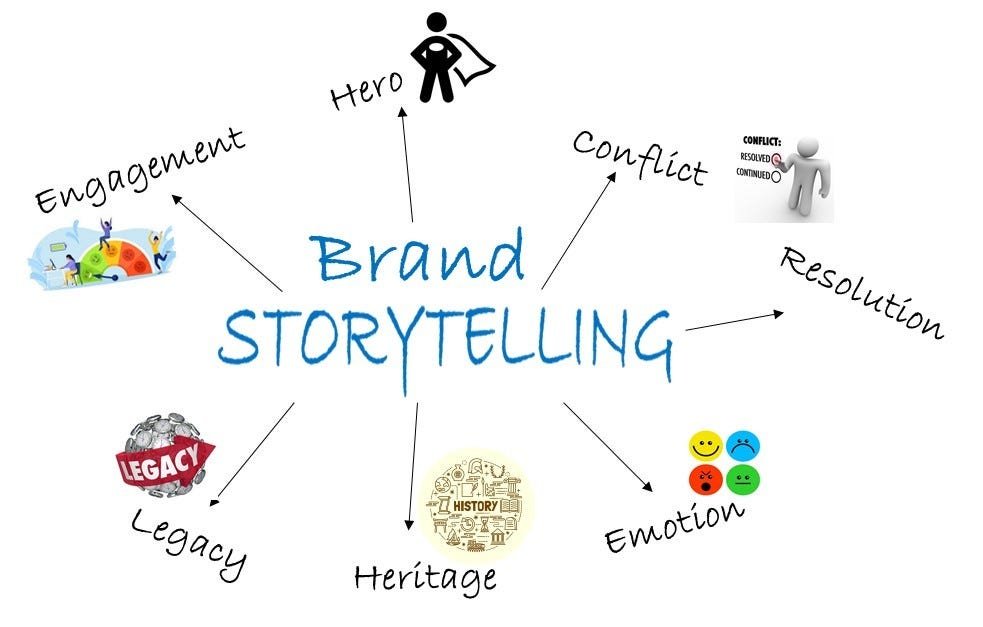
Crafting Compelling Content
Content is the heart of your website. High-quality writing, visuals, and media build trust and authority. Use the pillar-and-cluster approach to organize content into deep, comprehensive guides (pillar pages) and supporting articles (cluster content) that answer subtopics. This method signals to search engines that your site is a comprehensive resource, boosting your topical authority.
For example, if you’re a digital marketing agency, your pillar page might be “The Ultimate Guide to SEO,” with clusters covering keyword research, on-page optimization, link building, local SEO, and technical SEO.
Storytelling and Brand Voice
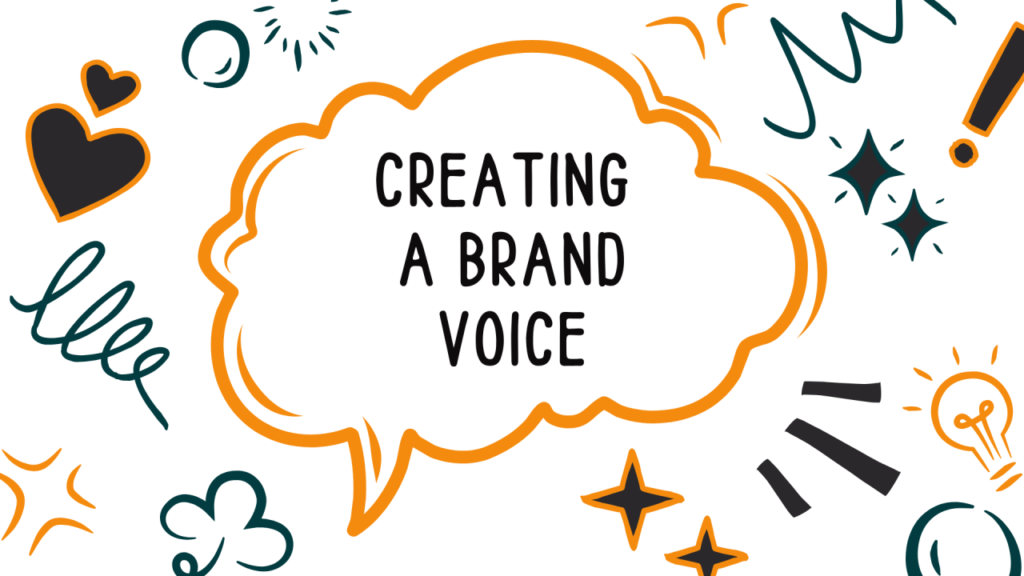
Your brand voice is how you speak to your audience. Whether formal, conversational, or quirky, it should be consistent across your website. Storytelling humanizes your brand and connects with readers on an emotional level. Share your origin story, successes, failures, and the principles you stand for.
Use visuals—photos of your team, behind-the-scenes videos, and custom illustrations—to convey authenticity. Combine long-form storytelling with microcopy that guides users through each step, building trust and encouraging them to take action.
Inclusive and Accessible Content
Inclusivity extends beyond design into the words you choose and the way information is presented. Write in plain language, avoid jargon, and break up text with headings and lists. Provide transcripts for videos, alt text for images, and descriptive links. Use inclusive imagery that reflects diverse audiences. Be mindful of cultural differences and avoid idioms that may not translate globally. An inclusive site tells all visitors: “You belong here.”
E-Commerce and Conversions – Turning Visitors Into Customers
User Journey and Conversion Funnels
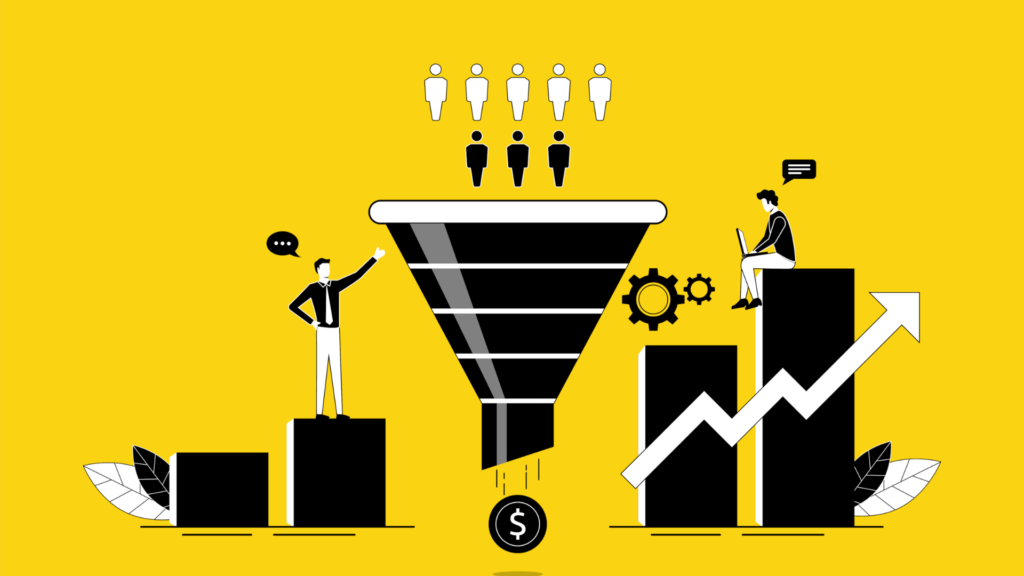
Mapping your user journey from discovery to purchase enables you to identify friction points and optimize conversions. Consider how visitors arrive (through search, social media, or referrals) and what actions they need to take. Provide clear navigation, persuasive product descriptions, and social proof such as testimonials and reviews.
Use data-driven testing, like A/B tests or multivariate tests, to refine landing pages and calls-to-action. Hostinger’s article notes that AI can automate A/B testing, choosing the best-performing designs based on real-time data.
Payments, Security, and Trust Indicators
Select secure, user-friendly payment gateways such as Stripe, PayPal, or Apple Pay. Display trust badges, SSL certificates, and privacy seals to reassure customers. Ensure that your checkout process is as streamlined as possible: minimize form fields, offer guest checkout, and provide multiple payment options. Implement two-factor authentication where necessary, and comply with payment industry standards like PCI DSS to protect customer data.
Personalization in E-Commerce
Personalized recommendations and dynamic pricing can boost conversions. AI-driven engines analyze browsing behavior, cart contents, and purchase history to display relevant products, upsells, and cross-sells. For example, if a customer frequently purchases running shoes, your site might suggest new models or complementary accessories. Hostinger mentions predictive analytics that forecast user behavior and personalize discounts or content accordingly.
Cart Recovery and Retention
Abandoned carts are a major challenge in eCommerce. Use automated email or SMS reminders to encourage customers to complete purchases. Offer incentives like free shipping or limited-time discounts. Implement persistent carts, so items remain saved across devices.
Provide wish lists or save-for-later features to accommodate customers not yet ready to buy. Post-purchase, nurture loyalty with personalized follow-up emails, membership programs, and referral incentives.
Analytics, Testing, and Continuous Improvement
Measuring Success With Analytics
Track performance metrics using tools like Google Analytics, GA4, Matomo, or Mixpanel. Monitor metrics such as traffic sources, bounce rate, time on page, conversion rate, and user flows. Set up goals and funnels to see where users drop off. Heat mapping tools and session recordings reveal how users interact with your pages, where they click, and where they encounter difficulties.

Optimization Through A/B and Multivariate Testing

Testing allows you to validate hypotheses and make data-driven decisions. Hostinger’s trends article explains that AI can automate A/B testing, rapidly selecting the best designs based on real-time user feedback. Start by testing one element at a time—headline, button color, layout—and ensure the difference is significant enough to draw conclusions.
Use statistical significance calculators to determine when a test has enough data. Beyond A/B tests, consider multivariate testing to evaluate combinations of variables for more complex pages.
Iterative Design and Development
A website is never truly finished. Adopt a continuous improvement mindset, where you regularly review analytics, gather user feedback, and implement updates. Agile methodologies help you adapt quickly, releasing small improvements rather than overhauling your site every few years. Regularly update your content to reflect new products, trends, or business priorities, and remove outdated information.
Accessibility Audits and Compliance
Perform accessibility audits using automated tools and manual testing with screen readers and keyboard-only navigation. Address issues such as missing alt text, insufficient color contrast, and improper heading structure. Train your team on accessible design and ensure accessibility is considered at every stage of development. Compliance benefits all users and can protect your business from legal consequences.
Emerging Technologies and Future Directions
Voice-Activated Interfaces and Conversational AI

As voice assistants like Siri, Alexa, and Google Assistant become ubiquitous, voice-activated interfaces will permeate web design. Hostinger notes that voice interface optimization is increasingly important. Voice interactions reduce friction and provide hands-free navigation, particularly for accessibility.
To prepare, structure content with clear headings and descriptive alt text so voice bots can interpret and relay information accurately. Integrate voice search into your site to allow users to find products or articles by speaking.
Virtual Reality, Augmented Reality, and Mixed Reality

VR and AR create immersive experiences that allow users to interact with products or environments. Hostinger predicts that VR and AR will become more common, enabling customers to virtually “try on” clothes, see furniture in their homes, or tour properties. Even businesses outside retail can leverage AR for interactive training, simulations, or education. Start experimenting with 3D models, WebXR APIs, and AR-enabled product views.
Multi-Sensory and Holographic Experiences
Looking further ahead, web experiences may integrate haptics, scent, and holography. While still experimental, these technologies could revolutionize fields like e-commerce, gaming, and education. Hostinger envisions websites that deliver multi-sensory experiences. For example, a perfume retailer could allow users to smell fragrances through scent diffusers synced with product pages. Holographic interfaces could let users navigate websites in three-dimensional space, creating interactive kiosks or immersive exhibitions.
Biometric Verification and Personalization
Biometrics like facial recognition and fingerprint scanning can enhance security and personalization. Hostinger suggests that future web designs might greet users by name and tailor content based on biometric data. While this raises privacy concerns, it could streamline login processes and deliver hyper-personalized experiences. Brands should weigh the convenience against ethical considerations and regulatory compliance.
Ethical and Privacy-Centered Design
Consumer awareness of digital rights is growing. Hostinger predicts a shift toward designs prioritizing user privacy and ethics. Transparent data practices, opt-in consent forms, and clear explanations of data usage will become standard. Consider implementing privacy dashboards that allow users to control how their data is stored and shared. Adopt “privacy by design” methodologies that embed data protection into your development process rather than treating it as an afterthought.
Frequently Asked Questions About Website Development
1. Why is website development essential for modern brands?
A website is your digital headquarters. It builds credibility, drives conversions, and acts as a platform for storytelling and customer support. In 2025, most consumers research online before making purchases, and a well-designed site can significantly influence buying decisions. Web design accounts for 95 % of first impressions, underscoring its importance.
2. How often should I redesign or update my website?
A full redesign is typically needed every 2–3 years, but you should update content and features continuously. Regularly review analytics and user feedback, then implement iterative improvements. This agile approach keeps your site fresh, secure, and aligned with evolving user expectations and technology trends.
3. What’s the difference between responsive design and mobile-first design?
Responsive design adapts to various screen sizes, ensuring that the same site works across devices. Mobile-first design starts with the mobile experience and then scales up to larger screens. Both approaches are vital in 2025, but a mobile-first mindset helps prioritize performance and usability on smaller devices.
4. How do AI and machine learning improve website development?
AI helps generate layouts, personalize content, analyze user behavior, enhance SEO, and automate A/B testing . Chatbots provide real-time support , predictive analytics anticipate user needs , and automated content creation tools can draft or optimize copy. These technologies save time and deliver tailored experiences.
5. How can I ensure my website is accessible?
Follow WCAG guidelines: use semantic HTML, provide alt text for images, maintain sufficient color contrast, and ensure keyboard navigability. Test your site with screen readers and real users with disabilities. Accessibility isn’t a one-time task—perform regular audits and address issues promptly.
6. What are micro interactions and why do they matter?
Micro interactions are small animations or feedback events that respond to user actions. They can be as simple as changing a button color on hover or as complex as animated progress indicators. These details make interactions intuitive and enjoyable, guiding users through your site and increasing engagement.
7. Should I choose a headless CMS for my website?
Headless CMSs provide flexibility by separating content from presentation. They are ideal if you plan to deliver content across multiple platforms (web, mobile apps, IoT devices). However, they require additional development work to build the front end. Choose a headless CMS if you need scalability and omnichannel content management; otherwise, a traditional CMS may suffice.
8. How do I improve my website’s load speed?
Compress images, minify code, leverage browser caching, and use CDNs. Optimize fonts and reduce the number of third-party scripts. Measure your performance using tools like Google PageSpeed Insights, and aim for a load time under three seconds. Consider implementing lazy loading for images and videos.
9. What role does storytelling play in web design?
Storytelling humanizes your brand, builds emotional connections, and differentiates you from competitors. Use narrative structures (beginning, middle, end) throughout your pages. Combine text, images, illustrations, and animations to guide users through a journey. Personal stories, case studies, and behind-the-scenes content build trust and loyalty.
10. How can I plan for future technological shifts?
Stay informed about emerging trends like voice search, AR/VR, holographic interfaces, and biometric personalization. Adopt modular architectures (e.g., microservices, headless CMS) that allow you to integrate new technologies easily. Maintain an agile workflow to iterate and incorporate innovations without disrupting existing systems.
Conclusion – Building a Future-Proof Website
Website development in 2025 is a blend of art, science, and technology. It requires an understanding of design principles, human psychology, and emerging tech trends. By focusing on responsive design, speed, accessibility, personalization, modern aesthetics, and ethical practices, you can create websites that engage users and stand the test of time.
Remember that your website is never truly finished; continuous improvement, data-driven optimizations, and a commitment to inclusivity will ensure your brand’s online presence remains strong, adaptable, and ahead of the curve.
